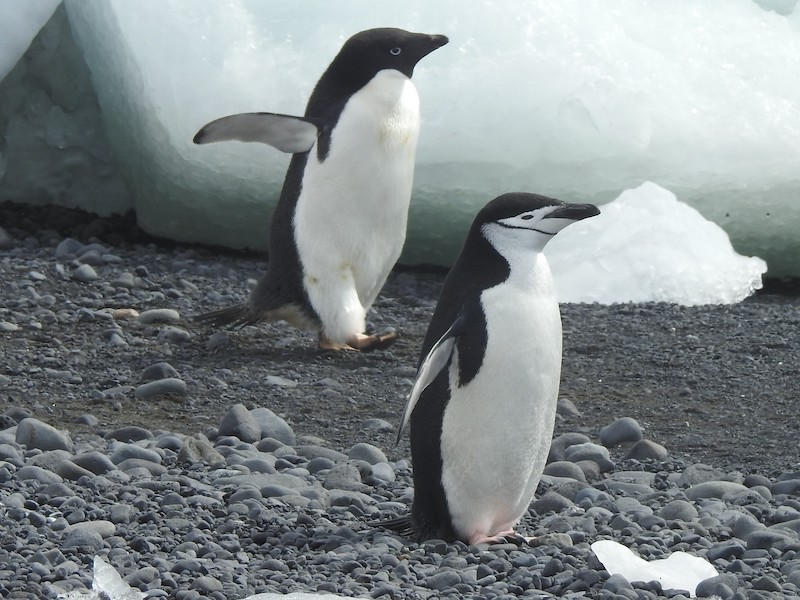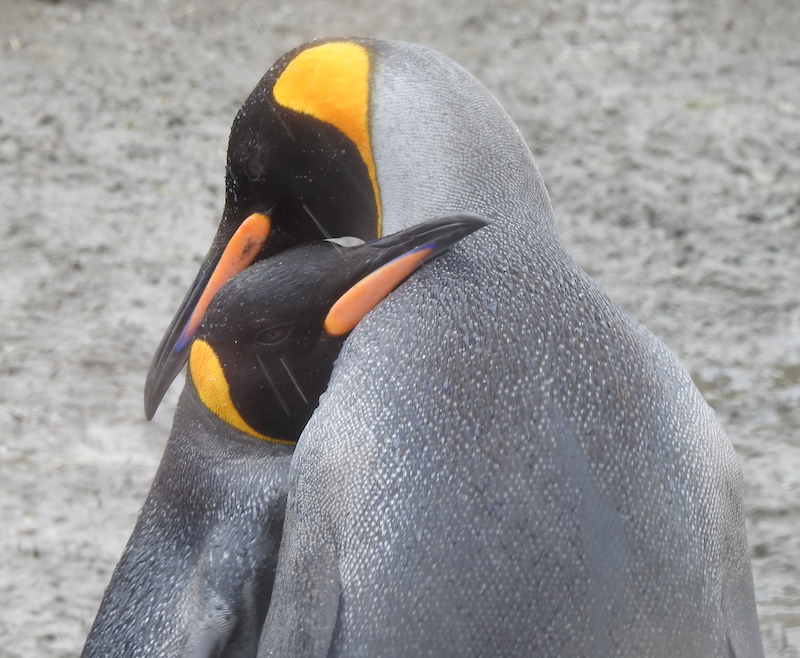Antarctica used to be thought of as a frozen wasteland where nothing lived or grew and which was too cold for anything to survive. Now it is recognised as one of the last great wildernesses which needs protection from exploitation or its very delicate eco-systems will topple. The cold waters abound with micro-organisms and tiny crustaceans such as krill that attract higher animals. The bird life can be impressive and abundant in places and, of course, the penguins are a sight to behold.

Most people know Antarctica as a bitterly cold wasteland with nothing but rock and ice. Antarctic however, has a rich and diverse spread of animal life, the best known of which are the penguins and whales. The cold Antarctic waters provide a nutrient rich environment which sustains a long and complex food chain, the basis of which is plankton and krill.
The Antarctic virtually unknown 200 years ago, and getting to Antarctica remains a challenge today. The two main gateways to the frozen continent are Ushuaia, Argentina and Christchurch, New Zealand. Ushuaia is the closest with a distance of 1000km from the Antarctic Peninsula. Due to its proximity and the wealth of animal life in the Peninsula, Ushuaia is Antarctica’s biggest tourist hub. Being in the Tierra del Fuego makes it a good spot for birders to start spotting.
Once in the Peninsula, one can get up close to several of these species particularly during landings to various islands or the continent itself.

Penguins colonies are particularly popular with tourists allowing one to get to within 3 meters (IAATO rules) of the animals. The most commonly sighted species of bird sighted by tourists during landings are penguins (Adelie, Gentoo, Chinstrap, and sometimes Emperor, Rockhopper and Macaroni); Sheathbills and Skua.
South Georgia and the South Sandwich Islands are a collection of islands in the South Atlantic Ocean. Most of the islands, rising steeply from the sea, are rugged and mountainous. At higher elevations, the islands are permanently covered with ice and snow.
South Georgia, a UK dependency was discovered in 1775 by James Cook and is within the Antarctic circle and increasingly visited. It had a sealing and whaling station throughout the nineteenth and early twentieth centuries with whaling ceasing altogether in the 1960s. In 1985 it ceased to be administered by the Falkland Islands and became a separate territory with a small military garrison. The King Edward Point base was returned to civilian use in 2001 and has ever since been operated by the British Antarctic survey.
South Georgia supports many sea birds, including albatross, a large colony of king penguins and penguins of various other species, along with petrels, prions, shags, skuas, gulls and terns. Birds unique to the archipelago are the South Georgia shag, South Georgia pipit, and the South Georgia pintail. Both South Georgia and the South Sandwich Islands have been identified as Important Bird Areas (IBA) by BirdLife International.

Seals frequent the islands (Leopard, Weddel, Crabeater etc);, and whales (Fin, Humpback, Killer, Minke, Southern Right etc.) may be seen in the surrounding waters. There are no native land mammals, though brown rats and mice were accidentally introduced and reindeer introduced for food. Because of their detrimental effect upon native flora reindeer have been culled finally being eradicated in 2015.
Since Antarctica is given special environmental protection by international law, tourism is a topic of much debate. Tourism in Antarctica is overseen by Members of IAATO who comply to strict rules and standards which are aimed at making tourist visits to Antarctica as environmentally friendly as possible. You can find information various tours to Antarctica with relevant info about the tour and operators below.
Major Source: Fatbirder
Map Source: Wiki Commons
